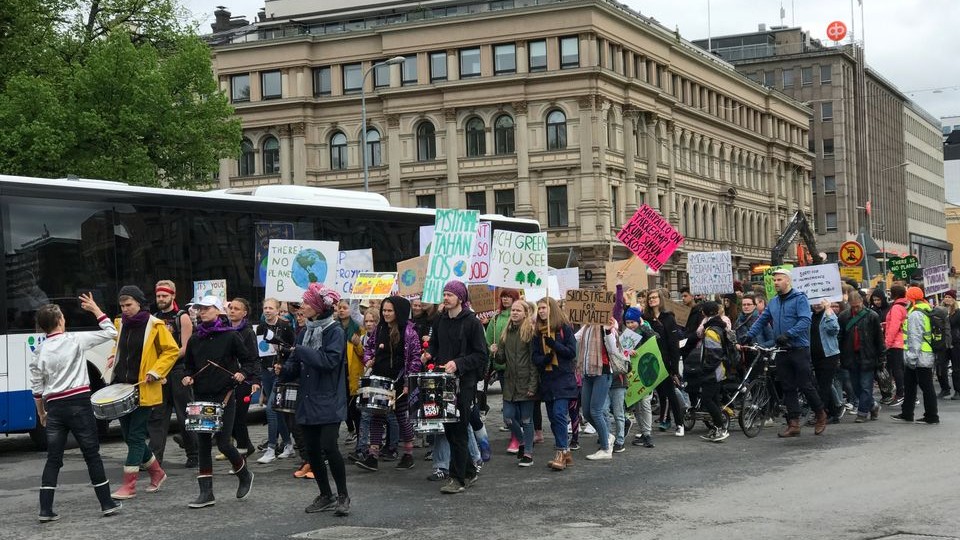How will Finland become carbon neutral by 2035?

Finland’s international profile as a climate change trailblazer has been enhanced this year by ambitious targets set by the government and a heartfelt speech by President Sauli Niinistö at the United Nations General Assembly.
“Even if we were able to stop all of our CO2 emissions tomorrow, we would have to live, for decades to come, with the climate change we have already caused,” Niinistö told the assembled world leaders.
“We are no longer able to avoid the climate crisis completely. We also have to achieve concrete results in adapting to the inevitable.”
Those concrete results are yet to be seen. The government’s budget for 2020 included higher taxes on petrol and some additional funding for environmental measures, but also continued to fund subsidies for carbon-intensive peat burning.
In total some 3.5 billion euros of subsidies harmful to the environment were identified by the government’s own budget proposal.

The budget got a cool reception from Markku Ollikainen, the chair of Finland’s climate panel, a body of experts set up to provide the government with recommendations on climate policy.
“I would have expected subsidies for peat burning to be axed, because that would have the biggest impact,” said Ollikainen. “The second thing I would have expected would be logging. A charge for clearing forest would reduce emissions from land use really quickly.”
The strongest voice this week has undoubtedly been that of Greta Thunberg, the teenage Swedish activist who chided world leaders at a climate summit on Monday.
The global climate strike movement she helps to lead has been an outlet for young people’s anger and despair, with strikes hitting all corners of the globe.
Finland’s latest climate strike hits on Friday 27 September, with schoolchildren and students set to leave their classrooms and take to the streets to demand quicker action on carbon emissions.
Be the (climate) change you want to see?
“We know we are not doing enough,” says Pursiainen. “Everybody knows it. People think that somebody else somewhere will do something to solve this, but we are running out of time for those solutions,” says climate activist Riina Pursiainen.
Pursiainen serves as vice-chair of the Finnish chapter of Youth Agenda 2030, a body established for young people to advocate for the UN’s 2030 sustainable development goals in the Finnish context.
“We can’t stop the climate from changing but we can stop the worst of the effects of climate change and we can learn better how to live in the age of climate change,” explained Pursiainen, who is clear that ‘we are not doing enough’.
“I do think that if we don’t do anything it will just be impossible for us to live with ourselves in 30 years’ time. So I think we have to do everything we can.”
Comparisons with ozone layer action
Pursiainen draws the comparison between CFCs in fridges, which were found to damage the ozone layer and subsequently banned in consumer products.
“We didn’t say that consumers have a choice of buying a more expensive fridge that doesn’t have these chemicals, or they could buy the same kind of fridge that is cheaper but has this chemical that destroys the ozone layer,” says Pursiainen.
“It didn’t happen like that, there was direct action from an international level. We said that we were not going to produce those refrigerators any more. It was not a consumer choice.”

Amanda Rejström, founder of social enterprise Spark Sustainability, agrees that the new government’s budget falls far short of what’s needed to fight the problem.
“No, I don’t think it’s enough at all. I don’t think the target of carbon neutrality by 2035 is reflected in the budget, we need to do much more. However I’m really happy that we have a government setting this target,” says Rejström.
Her outfit’s goal is to coax people to change behaviour, because lifestyles are very likely to be different as the world moves to a lower-carbon future.
She says the juxtaposition between personal responsibility and government policy is a ‘stupid discussion’.
“All of these political decisions that we’re waiting for will happen, they are inevitable, so we want to prepare people for them,” says Rejström. “The lifestyle changes that support carbon neutrality by 2035 are possible and, contrary to popular belief, they can increase happiness.”
“We want to gently wake people up and lead them to the low-hanging fruit in their own carbon footprint. There are a lot of voices being very critical, but we want to be positive and not make people feel guilty.”
Related stories from around the North:
Canada: Climate change education is not just about science, Blog by Ingrid A. Medby
China: As China adapts to a melting Arctic, Shanghai prepares for the worst, The Independent Barents Observer
Finland: Education, wage subsidies key in Finland’s budget for 2020, Yle News
Norway: Climate change is about to divide Norway’s largest Arctic island, The Independent Barents Observer
Russia: Moscow supports Vostok Coal’s expansion into protected Arctic tundra, The Independent Barents Observer
Sweden: Local councils in Sweden more interested in climate change preparedness, Radio Sweden
United States: U.S. Republicans want to show their green side… without talking climate, Alaska Public Media



